Myanmar botia - Botia kubotai
Scientific name: Botia kubotai
Common name: Myanmar botia
Family: Cobitidae
Usual size in fish tanks: 12 - 15 cm (4.72 - 5.91 inch)
014
Recommended pH range: 6.3 - 7.3
Recommended water hardness: 4 - 12°N (71.43 - 214.29ppm)
0°C 32°F30°C 86°F
Recommended temperature range: 24 - 28 °C (75.2 - 82.4°F)
The way how these fish reproduce: Spawning
Where the species comes from: South Asia
Temperament to its own species: peaceful
Temperament toward other fish species: peaceful
Usual place in the tank: Bottom levels
Food and Feeding
Myanmar Botia (Botia kubotai) are omnivores with a strong preference for protein-rich foods. In their natural habitat, they primarily feed on small invertebrates and snails. In captivity, they enjoy a variety of foods, including snails, bloodworms, and brine shrimp. They readily accept a diverse range of prepared foods such as high-quality flakes, sinking pellets, and frozen or live foods. Supplementing their diet with occasional treats of fresh vegetables like blanched zucchini or cucumber can provide additional nutrients and variety.
Feeding them once or twice daily with what they can consume in a few minutes helps maintain water quality and prevents overfeeding. Since Myanmar Botia are active bottom dwellers, it's essential to ensure that some food reaches the bottom of the tank where they primarily feed. Their love for snails makes them an excellent choice for controlling snail populations in the aquarium, but they should still receive a balanced diet to thrive.
Sexing
Sexing Myanmar Botia can be challenging, especially when they are young. As they mature, subtle differences may become apparent. Males tend to be slightly larger and slimmer than females. During the breeding season, females may appear rounder when carrying eggs. However, these differences can be subtle, and sexing them accurately often requires careful observation over time.
Breeding
Breeding Myanmar Botia in captivity is a challenge that has yet to be successfully documented. Very little is known about their breeding habits in the wild, making it difficult to replicate the necessary conditions in an aquarium setting. In their natural habitat, they are likely seasonal spawners, but the exact triggers and environmental requirements remain unclear. While it is not impossible, breeding Myanmar Botia is considered extremely difficult for home aquarists.
For those interested in breeding loaches, other species such as the Clown Loach (Chromobotia macracanthus) may be more suitable, as they have been bred in captivity under specific conditions. Until more is understood about the breeding habits of Myanmar Botia, focus on providing them with an optimal environment and varied diet to ensure their health and longevity.
Origin
Myanmar Botia are native to Southeast Asia, particularly the river systems of Myanmar (Burma) and Thailand. They are typically found in fast-flowing streams and rivers with plenty of hiding spots among rocks and submerged vegetation. Understanding their origin helps aquarists replicate similar conditions in their home aquariums, promoting their natural behavior and overall well-being.
Tank Setup and Environment
To create an ideal environment for Myanmar Botia, a tank of at least 80 liters (20 gallons) is recommended, with larger tanks preferred for groups. These fish are highly social and thrive best when kept in groups of five or more. A well-decorated tank with a sandy substrate, plenty of rocks, driftwood, and caves will provide the hiding spots they need to feel secure. Adding hardy plants like Java Fern and Anubias can enhance the tank’s aesthetics and offer additional cover.
Myanmar Botia prefer a slightly acidic to neutral pH range of 6.3-7.3 and a water temperature of 24-28°C (75.2-82.4°F). Water hardness should be maintained between 4-12°N (71.43-214.29 ppm). Use a gentle filtration system to keep the water clean without creating strong currents, as they prefer moderately flowing waters. Regular water changes and maintenance are essential to keep the water quality high and free of toxins.
These fish are known for their inquisitive nature and will explore their surroundings, so providing an enriched environment with plenty of hiding places is crucial. Ensure the tank is securely covered, as they may attempt to jump out if startled or during exploration. Dim lighting and a natural decor setup can help reduce stress and encourage more natural behavior.
Short Description
Myanmar Botia (Botia kubotai) are peaceful, bottom-dwelling loaches known for their unique markings and social nature. Native to the streams and rivers of Myanmar and Thailand, they thrive in aquariums that mimic their natural habitat, with plenty of hiding spots and a varied diet. They are often used to control snail populations due to their natural appetite for snails. These fish prefer to live in groups of five or more, displaying their best colors and behaviors when kept in a social setting. While breeding them in captivity remains a challenge, their engaging personalities and stunning appearance make them a popular choice for aquarists.
Pictures
Bought by aqua-fish.net from jjphoto.dk. Also thanks to Jonathon Whipple.






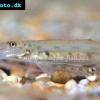 Horseface
Horseface  Horseface
Horseface 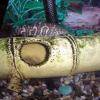 YoYo
YoYo  Bengal
Bengal  Burmese
Burmese 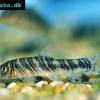 Zebra
Zebra 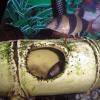 Clown
Clown  Dojo
Dojo 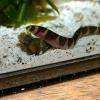 Kuhli
Kuhli  Loach
Loach 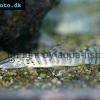 Tiger
Tiger  Tailspot
Tailspot 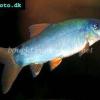 Blue
Blue